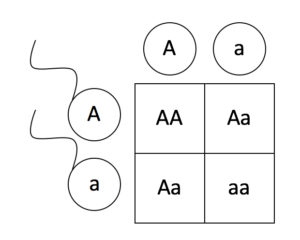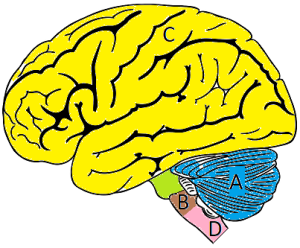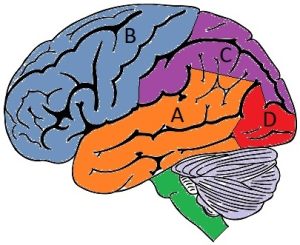Mock test. 100 marks available.
GCSE Edexcel Biology Paper 1
Good Luck!
Quiz Summary
0 of 61 Questions completed
Questions:
Information
You have already completed the quiz before. Hence you can not start it again.
Quiz is loading…
You must sign in or sign up to start the quiz.
You must first complete the following:
Results
Results
0 of 61 Questions answered correctly
Your time:
Time has elapsed
You have reached 0 of 0 point(s), (0)
Earned Point(s): 0 of 0, (0)
0 Essay(s) Pending (Possible Point(s): 0)
| Average score |
|
| Your score |
|
Categories
- Not categorized 0%
- 1
- 2
- 3
- 4
- 5
- 6
- 7
- 8
- 9
- 10
- 11
- 12
- 13
- 14
- 15
- 16
- 17
- 18
- 19
- 20
- 21
- 22
- 23
- 24
- 25
- 26
- 27
- 28
- 29
- 30
- 31
- 32
- 33
- 34
- 35
- 36
- 37
- 38
- 39
- 40
- 41
- 42
- 43
- 44
- 45
- 46
- 47
- 48
- 49
- 50
- 51
- 52
- 53
- 54
- 55
- 56
- 57
- 58
- 59
- 60
- 61
- Current
- Review
- Answered
- Correct
- Incorrect
-
Question 1 of 61
1. Question
1 point(s)Place the measurement units in order from biggest to smallest
- Micrometres (μm)
- Metres (m)
- Kilometres (km)
- Nanometres (nm)
- Millimetres (mm)
- Picometres (pm)
View Answers:
CorrectIncorrect -
-
Question 2 of 61
2. Question
3 point(s)[question number = 01.3] Drag and drop to match the role and structure
Sort elements
- Ribosomes
- Cell wall
- Vacuole
- Sites of protein synthesis (where proteins are made)
- Supports the cell providing strength and flexibility for growth
- Stores nutrients and salts
CorrectIncorrect -
Question 3 of 61
3. Question
2 point(s)Carbohydrates, quadrats, catalysts, chemicals, proteins
-
Complete the sentence: Enzymes are that act as biological .
CorrectIncorrect -
-
Question 4 of 61
4. Question
4 point(s)Drag and drop to match the term with the description
Sort elements
- Enzyme specificity
- Enzyme activity
- Active site
- Substrates
- Enzymes catalyse unique reactions
- Efficiency of catalysis
- Where substrate binds and reaction takes place
- Molecules that change in a reaction
CorrectIncorrect -
Question 5 of 61
5. Question
3 point(s)Drag and drop to match the description to the process of transporting substances
Sort elements
- Osmosis
- Diffusion
- Active transport
- Movement of a fluid through a semipermeable membrane from low to high solute concentration
- Movement from high to low concentration
- Movement through a concentration gradient from low to high, requiring energy
CorrectIncorrect -
Question 6 of 61
6. Question
1 point(s)[question number = 01.6] Use some of the following terms to fill in the blanks:
Chaotic, controlled, peaceful, uncontrolled
-
Cancer cells form when changes in cells lead to cell division
CorrectIncorrect -
-
Question 7 of 61
7. Question
1 point(s)Which of the following are outcomes of mitosis?
CorrectIncorrect -
Question 8 of 61
8. Question
1 point(s)Relay neurone, central nervous system, sensory neurone
-
Fill in the gap: Receptors detect a source of pain and send impulses via the sensory neurone towards the spinal cord. The intercepts the signal and diverts it along motor neurones to the effectors (muscles) which quickly move away from the source of pain.
CorrectIncorrect -
-
Question 9 of 61
9. Question
1 point(s)Motor neurones carry impulses to which part of the nervous system?
CorrectIncorrect -
Question 10 of 61
10. Question
1 point(s)What is the gap between neurones called?
CorrectIncorrect -
Question 11 of 61
11. Question
1 point(s)Use one of the following words to fill in the blank:
Ionic, covalent, hydrogen, metalic-
Base pairs of DNA are joined by weak bonds.
CorrectIncorrect -
-
Question 12 of 61
12. Question
4 point(s)Use some of the following words to fill in the blanks:
Allele, gene, chromosome, amino acids, proteins, lipids, DNA-
A is a small section of DNA on a chromosome. Each codes for a particular sequence of , to make a specific .
Correct 4 / 4 PointsIncorrect / 4 Points -
-
Question 13 of 61
13. Question
5 point(s)Mitosis, meiosis, 2, 4, different, identical, haploid, diploid, gametes
-
During there are daughter cells produced. These are known as and they are genetically . The daughter cells are meaning they only contain half of the genes found in a typical human cell.
CorrectIncorrect -
-
Question 14 of 61
14. Question
1 point(s)Choose the correct statement about gametes
CorrectIncorrect -
Question 15 of 61
15. Question
1 point(s)During meiosis, how many daughter cells are produced?
-
daughter cells
CorrectIncorrect -
-
Question 16 of 61
16. Question
1 point(s)In the punnet square, a represents the allele for red hair. This allele is recessive. Use the punnet square to determine what percentage of offspring will have red hair.
 CorrectIncorrect
CorrectIncorrect -
Question 17 of 61
17. Question
3 point(s)Drag and drop to match the species to the fossil specimen
Sort elements
- Ardi
- Lucy
- The Leakey fossils
- Ardipithicus ramidus
- Australopithecus afarensis
- Homo habilis and Homo erectus
CorrectIncorrect -
Question 18 of 61
18. Question
1 point(s)Some of our evidence for human evolution is based on related species to humans from millions of years ago. Which of the following are characteristics of Ardi?
CorrectIncorrect -
Question 19 of 61
19. Question
1 point(s)Evidence for Darwin’s Theory of Evolution was found when resistance to what emerged in some species of bacteria?
CorrectIncorrect -
Question 20 of 61
20. Question
3 point(s)-
Complete the sentence: The World Health Organisation (WHO) defines health as a state of complete , and well being.
Correct 3 / 3 PointsIncorrect / 3 PointsHint
Use some of the following words:
mental
environmental
immune
social
physical
-
-
Question 21 of 61
21. Question
1 point(s)All of the following are characteristics that humans would want to enhance in plants – Taste, yield, disease resistance, drought resistance and flavour. What is the common feature amongst these characteristics?
CorrectIncorrect -
Question 22 of 61
22. Question
1 point(s)Cirrhosis is a disease which is caused by excess consumption of alcohol over many years. Which organ does cirrhosis affect?
CorrectIncorrect -
Question 23 of 61
23. Question
1 point(s)Diseases that can be passed from person to person are called what?
CorrectIncorrect -
Question 24 of 61
24. Question
4 point(s)Drag and drop to match the method of reducing spread with the correct pathogen
Sort elements
- Treat water with chlorine or ozone
- Mosquito nets
- Burn infected trees/leaves
- Cough/sneeze into tissues
- Cholera
- Malaria
- Chalara ash dieback
- Tuberculosis
CorrectIncorrect -
Question 25 of 61
25. Question
1 point(s)Using a stent (a small mesh tube) is a method sometimes used to widen blood vessels in the heart. What are the potential negative consequences of this procedure?
CorrectIncorrect -
Question 26 of 61
26. Question
1 point(s)What are the three domains?
CorrectIncorrect -
Question 27 of 61
27. Question
1 point(s)What is the binomial name for humans?
CorrectIncorrect -
Question 28 of 61
28. Question
1 point(s)Read the description and match it to the correct factor. Different characteristics as a result of mutation and sexual reproduction (inheritance).
CorrectIncorrect -
Question 29 of 61
29. Question
2 point(s)Environmental, interdependence, magnetic, genetic, rotationary
-
There are two sources of variation, these are and . Sometimes both of these factors can interact to cause variation.
CorrectIncorrect -
-
Question 30 of 61
30. Question
1 point(s)How are cells that line the small intestine specialised?
CorrectIncorrect -
Question 31 of 61
31. Question
1 point(s)Match each aseptic technique to its purpose.
Sort elements
- Prevent contamination
- Prevent condensation on the agar surface
- Sterilise Petri dishes and culture media
- Store Petri dishes upside down
CorrectIncorrect -
Question 32 of 61
32. Question
1 point(s)Calculate the cross-sectional area of a bacterial colony with a radius of 3 mm. Use π = 3.14 and answer to 2 decimal places
-
mm²
CorrectIncorrect -
-
Question 33 of 61
33. Question
3 point(s)Match the structure of the brain with the correct function.
Sort elements
- Memories, language, consciousness, intellegence
- Muscular coordination
- homeostasis
- Cerebellum
- Cerebrum
- Hypothalamus
CorrectIncorrect -
Question 34 of 61
34. Question
1 point(s)Place the options in the correct order based on the following description:
- Controlling voluntary movements
- Processing visual information
- Visual memories and language
- Processing sensory information
- Parietal lobe
- Frontal lobe
- Temporal lobe
- Occipital lobe
View Answers:
CorrectIncorrect -
Question 35 of 61
35. Question
1 point(s)Look at the image of the brain and put the names of the structures in the correct order from A to D.

- Medulla oblongata
- Spinal cord
- Cerebellum
- Cerebrum (cerebral cortex)
View Answers:
CorrectIncorrect -
-
Question 36 of 61
36. Question
1 point(s)Look at the image of the brain and put the names of the structures in order from A to D.

- Frontal lobe
- Parietal lobe
- Occipital lobe
- Temporal lobe
View Answers:
CorrectIncorrect -
-
Question 37 of 61
37. Question
1 point(s)Match each part of the eye to its primary function.
Sort elements
- Detects light intensity and colour
- Refracts light as it enters the eye
- Retina
- Cornea
CorrectIncorrect -
Question 38 of 61
38. Question
2 point(s)Use some of the following answers to fill in the blanks:
Hyperopia, myopia, retina, optic nerve-
In , light rays focus in front of the causing short sightedness.
CorrectIncorrect -
-
Question 39 of 61
39. Question
2 point(s)Use some of the following answers to fill in the blanks:
Retina, laser surgery, optic nerve, lens replacement-
In modern treatments, reshapes the cornea, while provides an artificial lens to improve vision.
CorrectIncorrect -
-
Question 40 of 61
40. Question
1 point(s)Select the advantage of asexual reproduction.
CorrectIncorrect -
Question 41 of 61
41. Question
2 point(s)Use some of the following answers to fill in the blanks:
Variation, single parent, energy, identical, food
-
Asexual reproduction is more efficient and produces offspring under favourable conditions.
CorrectIncorrect -
-
Question 42 of 61
42. Question
1 point(s)Which of the following is NOT an advantage of asexual reproduction?
CorrectIncorrect -
Question 43 of 61
43. Question
1 point(s)What is an advantage of sexual reproduction?
CorrectIncorrect -
Question 44 of 61
44. Question
1 point(s)Match each aspect of protein synthesis to its correct description.
Sort elements
- Non-coding DNA in front of a gene
- To the ribosome
- Initiates translation
- RNA polymerase binds
- tRNA transfers amino acids
- mRNA binds to ribosome
CorrectIncorrect -
Question 45 of 61
45. Question
2 point(s)Use some of the following answers to fill in the blanks:
Phenotype, amino acids, sequence, RNA polymerase-
The order of bases in DNA determines the of in a protein.
CorrectIncorrect -
-
Question 46 of 61
46. Question
1 point(s)Select all the stages involved in transcription.
CorrectIncorrect -
Question 47 of 61
47. Question
1 point(s)Match each discovery with the scientist or theory.
Sort elements
- Basis of inheritance
- Watson and Crick
- Mendel
- Discovery of DNA's structure
CorrectIncorrect -
Question 48 of 61
48. Question
1 point(s)Match the type of inheritance with the correct example.
Sort elements
- ABO blood groups
- Haemophilia
- Blood type genes
- Codominance
- Sex-linked disorder
- Multiple alleles
CorrectIncorrect -
Question 49 of 61
49. Question
2 point(s)Use some of the following answers to fill in the blanks:
Cell wall, leaf cuticle, enzymes, chloroplasts-
Plants defend against pathogens with physical barriers such as the and the .
CorrectIncorrect -
-
Question 50 of 61
50. Question
1 point(s)Select all the methods plants use to defend against pathogens.
CorrectIncorrect -
Question 51 of 61
51. Question
1 point(s)Match each plant disease detection method with its description.
Sort elements
- Observation for disease markers
- Mapping affected areas
- Cell wall
- Visible symptoms
- Distribution analysis
- Physical barrier
CorrectIncorrect -
Question 52 of 61
52. Question
1 point(s)Use some of the following answers to fill in the blanks:
Herd immunity, antigen, vaccine, disease outbreak-
Immunisation helps protect communities by achieving .
CorrectIncorrect -
-
Question 53 of 61
53. Question
1 point(s)Arrange the steps of the lytic pathway in order.
- Host cell bursts, releasing viruses
- Virus replicates inside the host
- Viral DNA enters the host cell
View Answers:
CorrectIncorrect -
-
Question 54 of 61
54. Question
1 point(s)What did the work of Mendel help scientists understand?
CorrectIncorrect -
Question 55 of 61
55. Question
1 point(s)Describe one advantage of using tissue culture in medical research.
CorrectIncorrect -
Question 56 of 61
56. Question
1 point(s)What is the main evidence supporting the theory of evolution provided by the anatomy of the pentadactyl limb?
CorrectIncorrect -
Question 57 of 61
57. Question
2 point(s)Use some of the following answers to fill in the blanks:
Gene expression, non-coding DNA, protein, coding DNA, enzymes-
Genetic variants in can influence and phenotype.
CorrectIncorrect -
-
Question 58 of 61
58. Question
1 point(s)Select all the advantages of using biological control over chemical fertilisers.
CorrectIncorrect -
Question 59 of 61
59. Question
1 point(s)Match each type of plant defence with its example.
Sort elements
- Cell wall
- Thorns
- Physical barrier
- Mechanical defence
CorrectIncorrect -
Question 60 of 61
60. Question
5 point(s)[question number = 01.5] The male gametes (sperm cells) are adapted to their function. Describe 5 adaptations of sperm cells. (short answer)
Correct 5 / 5 PointsIncorrect / 5 Points -
Question 61 of 61
61. Question
5 point(s)[question number = 01.1] Which sub-cellular structures can be found in animals? (short answer)
Correct 5 / 5 PointsIncorrect / 5 Points
Is this higher or foundation?
This is a combined paper for higher and foundation students. You can achieve grades 1 – 9 on this paper, so it is suitable for all. Grades are moderated against the average result to give the most accurate indication of your performance. You can look at – How is this paper marked? for more information.
How is this paper marked?
This paper is automatically marked to determine which questions were answered correctly.
Your grade is determined using a Z-Score moderation system. Your GCSE exams are also moderated comparably so that the difficulty of papers is taken into account.
Roughly, this works by calculating your overall percentage and comparing it to the average percentage and the standard deviation. This means that for harder papers you need fewer points to get the same grade as you would for an easier paper.
As more students attempt the paper, the average score and standard deviation more accurately represent the difficulty of the paper and the grades become more accurate.
Making these papers and the marking system took considerable effort so if you found them helpful for your revision, please show your appreciation by rating the page.
What is in Edexcel Biology Paper 1?
In this paper, students are assessed on their familiarity with the material of Biology Paper 1. The difference between combined science biology and this paper is extra topics that are assessed on top of the other material. These topics include testing of food and also a food testing practical in the first module. The paper still aims to cover the fundamentals of biology as well as broadly half of the biology curriculum. After students pass this exam they should be prepared to move on to further study in any of the sciences as well as physical education. Students should also be equipped with some knowledge to help them navigate the world safely and securely.
In SB2 the important topics of cell growth, as well as the nervous system, the brain and the eyes, are covered. SB3 quizzes students on genetics and in particular, DNA, sexual and asexual reproduction and inheritance. These topics are further examined with reference to alleles, gene mutation and variation among populations. SB4 continues on from SB3 with testing of the student’s understanding of evolution and natural selection, alongside the approaches of selective breeding and genetic modification. SB5 shifts gears to assess the student on their knowledge of health and disease. This module covers different types of disease and modes of transmission, potential treatments and their pros and cons, and also the role of the immune system. If you want to see the next paper, try it here – Edexcel Biology Paper 2.
Which exam board are you studying?




